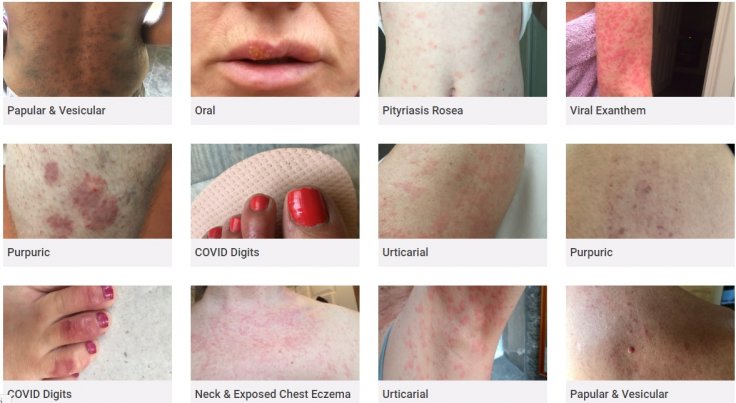The British Association of Dermatologists' (BAD) Covid-19 Skin Patterns website posts images of Coronavirus related skin rashes to help healthcare experts and patients find out whether any unusual rash is a sign of SARS-CoV-2 infection or not. But the website has been criticized for including only two images of black or brown skin among 400 pictures.
The website contains images of COVID-19 associated rashes, such as prickly heat and chickenpox-type rashes, even viral exanthem, eczema, and oral rashes as well as COVID fingers and toes.
These images were gathered by the COVID Symptom Study app as skin rashes have become a key feature of the Coronavirus caused disease. Almost nine percent of the app users with the rashes tested positive for then virus infection.

Lack of Images
As per Ore Odubiyi, who is director of BME Medics—a platform for students and professionals alike to inform, inspire and elevate BME people—said that the lack of website images showing how Coronavirus related rashes manifest on people of darker skin tones could mean that the healthcare professionals are not properly equipped to diagnose potential COVID-19 cases.
He said that while considering that some BAME communities in the UK are highly impacted by the deadly virus caused disease, it is very important that visual resources which show how COVID-19 related skin changes "may appear in darker skin tones are made readily available at a similar standard seen in resources exemplifying signs of disease in fairer skin tones."
However, as per a spokesperson for BAD, almost 3,000 images of suspected novel Coronavirus-caused rashes were uploaded via the app. Even though the survey specifically requested images from BAME communities, it received only 173 photographs.
"This may be explained, in part, by cultural factors but also because rashes are less visible on darker skin and may have been difficult to photograph," said the spokesperson and added that they had to reject some of these images due to poor quality and not being quite specific.
A senior lecturer in diversity and medical education at St George's, University of London, Margot Turner, who also co-authored a new handbook of clinical signs on black and brown skin, said that there are some situations in which people of color may not "present themselves to medical professionals because they may not recognize themselves in the language or the pictures that we use typically use."









